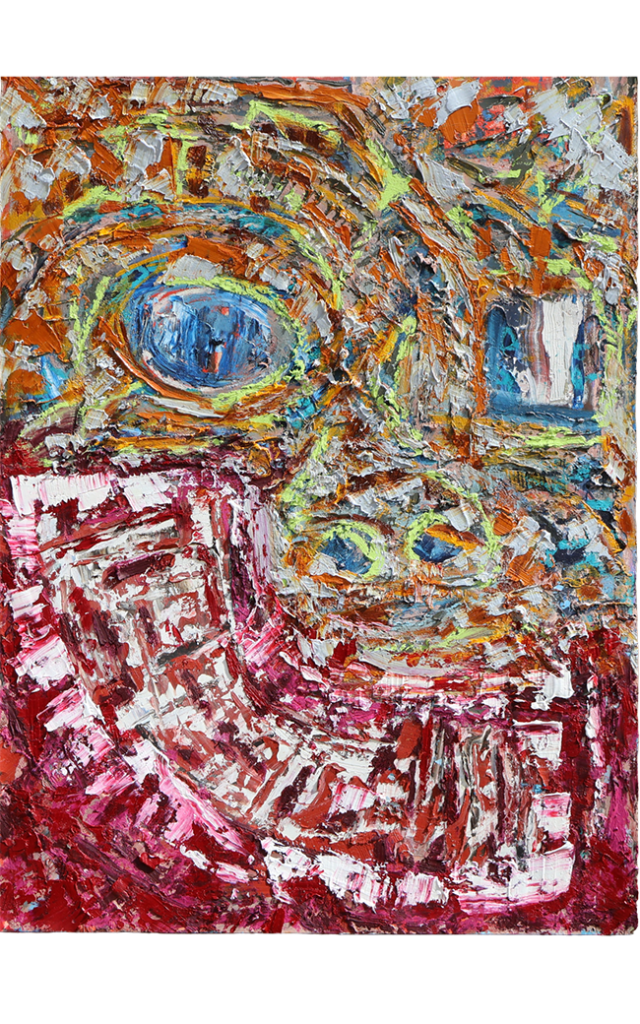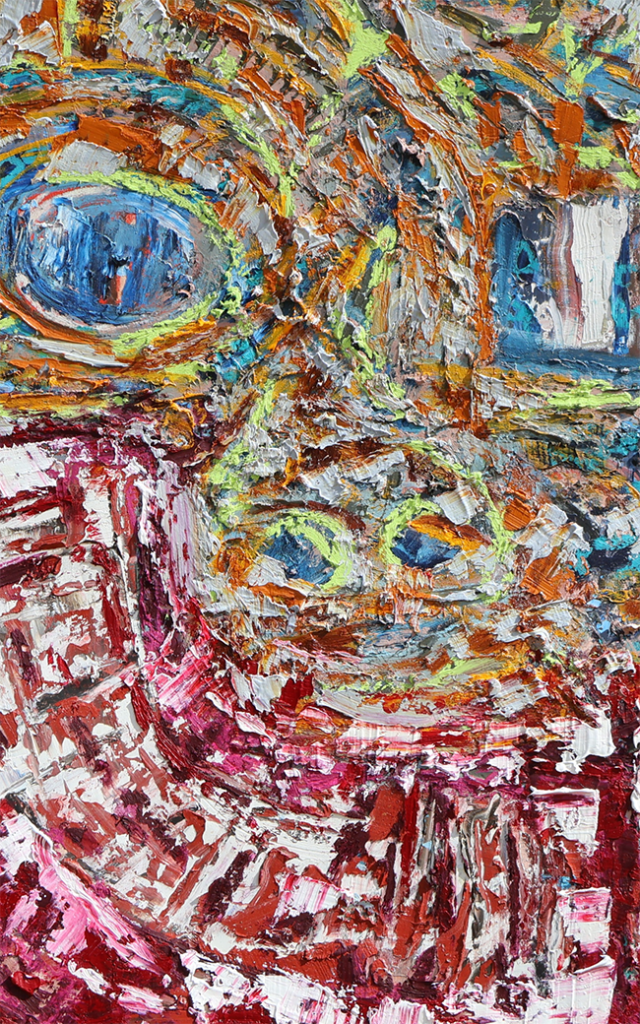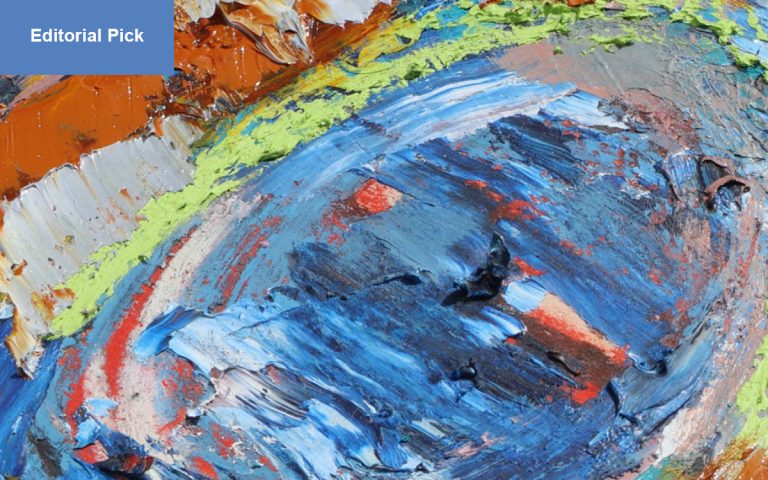Derrick Bullard started painting when he was just a teenager. He had ADD, lots of it, and not much that held his attention. But painting did. It gave him something to lock into—something that didn’t ask for neat answers or perfect focus, just time and presence. That was enough. And so he kept going. What began as a teenage coping mechanism became a lifelong rhythm. No art school. No dealer’s pressure. No critics to please. Just him and the paint, day after day. Over time, the act of making art stopped being a distraction and became a form of survival. His canvases grew into places where ideas could breathe, stripped of judgment, open to doubt, and alive with honesty.
Bullard’s path has always been on his own terms. He paints because he needs to. And in his work, you feel that same urgency—art that refuses to play it safe.

“I Am What Art Was”
One of Derrick Bullard’s most pointed works is titled I Am What Art Was. It isn’t just a painting—it’s a statement, an argument, a warning. At its center is a message about fear. Bullard sees fear as a disease that has settled deep into the art world. He isn’t talking about gallery scandals or auction prices; he’s talking about something quieter, more insidious. The way artists paralyze themselves before they even begin.
According to Bullard, too many painters, sculptors, and creators have chained themselves to what followers think. They post, they wait, they measure hearts and likes. And slowly, that feedback loop turns toxic. Instead of painting to explore, they paint to be accepted. Instead of building work from conviction, they play it safe, producing images that will not offend, confuse, or challenge. The dopamine rush of social media attention replaces the deep, difficult work of invention.

Bullard’s description of this problem is blunt: artists are producing what he calls “safe, generic and passionless art” designed to fit inside a feed. In his view, this isn’t just a stylistic choice; it’s a symptom of fear. Fear of losing followers. Fear of losing sales. Fear of not being respected. Fear has created a warped economy where mediocrity thrives because it’s comfortable.
But I Am What Art Was doesn’t simply point fingers. It carries the weight of a challenge. Bullard insists that art was never meant to be domesticated. Its role, at its most vital, is to disturb, to question, to prod at the status quo. He believes that too many artists have forgotten this calling. By trading conviction for approval, they’ve surrendered the dangerous edge that once defined art as a force in culture.
In Bullard’s view, the artist’s job is not to follow but to lead. Not to echo what the crowd already believes, but to risk saying what no one wants to hear. That doesn’t mean provocation for its own sake—it means creating from a place of honesty, even when the results are messy, misunderstood, or dismissed. He argues that this kind of risk is what keeps art alive. Without it, creativity collapses into decoration, and the artist becomes just another producer in the economy of clicks.
The metaphor of disease runs throughout his work. Fear spreads, infects, numbs. And when artists surrender to it, they stop reaching for anything larger than approval. Bullard paints this condition as a black hole—an endless loop where the energy of creation vanishes into silence. For him, the tragedy isn’t just individual. When an entire culture of artists embraces safety, the collective voice of art itself is weakened. What once was sharp, unruly, and dangerous becomes muted.
Yet Bullard’s critique is also a declaration of independence. By titling the work I Am What Art Was, he positions himself in contrast to the trend he’s describing. His painting becomes both a lament and a refusal. He refuses to bend to metrics, to opinions, to the false sense of respect built on numbers. In his mind, real respect comes from daring, from truth-telling, from work that holds to its own ground regardless of reception.
His words and his painting together form a manifesto: art cannot serve two masters. It cannot be both free and enslaved to approval. It cannot both challenge and appease. To be alive, it must risk.
For Bullard, this isn’t abstract philosophy. It is lived practice. From the start, his art has been about focus, not conformity. What once began as a way to settle restless attention has grown into a discipline rooted in conviction. He paints because painting matters—not because it sells, not because it garners attention, but because it’s the only way he knows to stay true.
In I Am What Art Was, Derrick Bullard holds up a mirror to modern artists and asks a hard question: are you free, or are you afraid?

